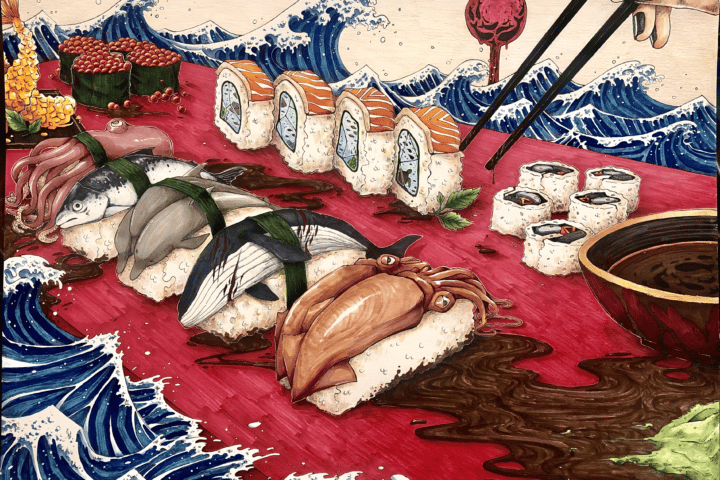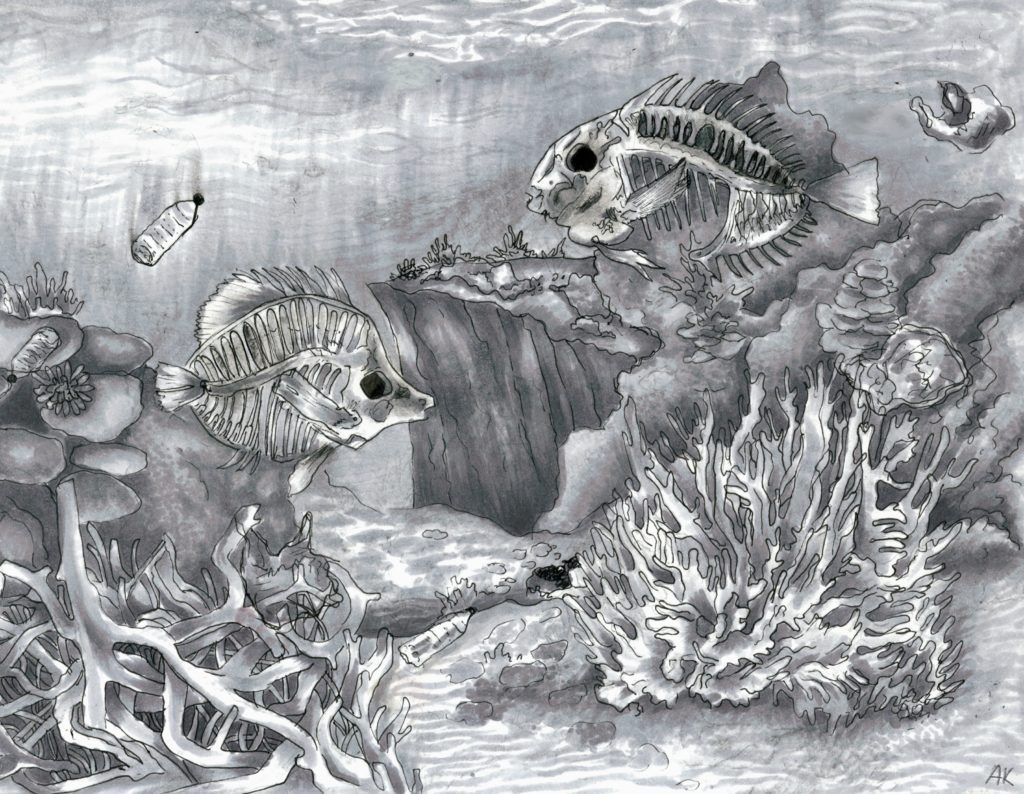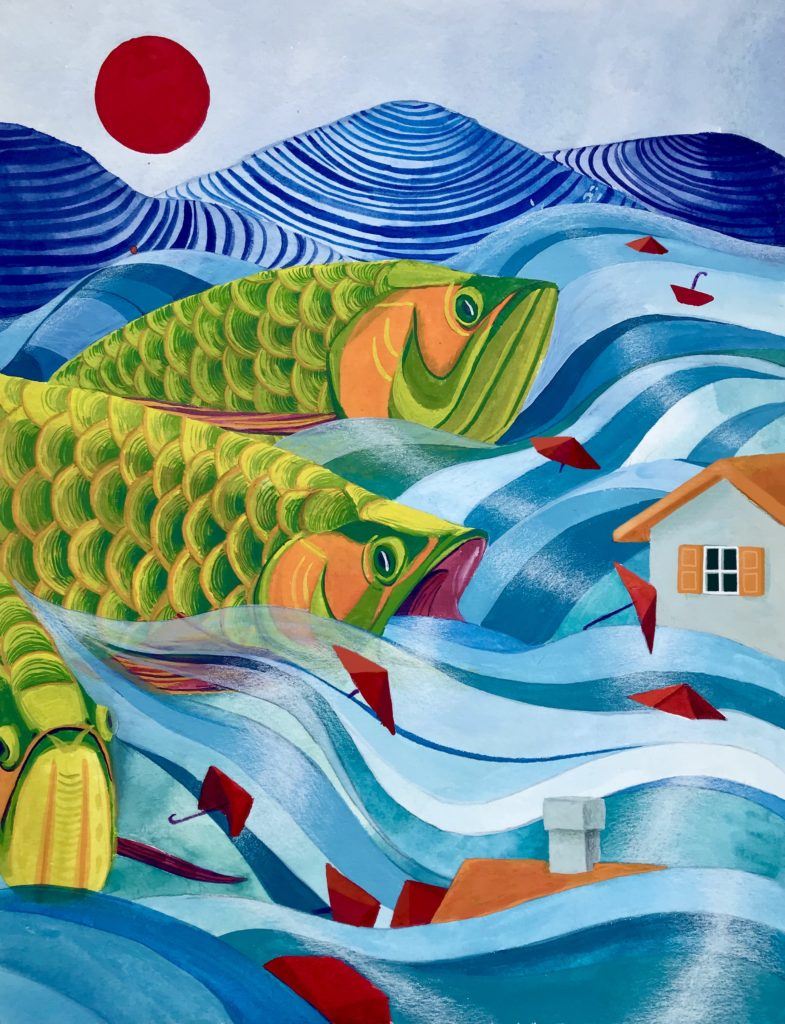
Raising the Question: Is Farmed Seafood Really the Solution to Overfishing?
June 20, 2024By Sabine Cuesta, 2024 Future Blue Youth Council member
Overfishing is an uncomfortable truth for seafood lovers everywhere. And as a common fixture in many of our diets, the global demand for seafood is only rising. Scaling up industrial fishing—with its many harmful practices—is far from the ideal answer to meeting the seafood demand of our growing population, so many turn toward farm-raised fish as a more sustainable solution.
Today, almost half of the seafood consumed globally comes from farms. Farming fish helps combat food insecurity, creates more sustainable economic opportunities, provides alternatives to harmful industrial fishing practices, and, in some cases, helps rebuild wild populations by releasing farmed fish into their natural habitat.
But seafood farming, known as aquaculture, has many challenges of its own. The impacts depend entirely on the system of aquaculture, which can vary based on the species being farmed. One aquaculture method, commonly used for salmon, involves netted pens that are placed in existing bodies of water. This system, where the fish are separated from the natural environment by only a net, poses three main problems.
First, the fish are unable to access natural food sources within the confines of the pen, meaning that food must be provided to them. For omnivores like salmon, this means that wild-caught fish must be processed into fishmeal for farm-raised fish to eat. In fact, about 10% of fish caught from the ocean end up as animal feed, including for other fish—detracting from the overall sustainability of the aquaculture industry and contributing to the overharvesting of our oceans.

“Beautiful” by Anna Kopec, 2019
Another issue is that a significant amount of fish is farmed in overcrowded pens, resulting in the fish collectively producing an immense amount of waste. This can do considerable damage to the ecosystem, polluting the surrounding environment and potentially spreading diseases or parasites to wild species in the area. Although the hope is that aquaculture can preserve wild populations, open-net fish farms can have devastating impacts on species that share the same body of water and have even introduced non-native viruses to Pacific salmon in British Columbia, Canada.
What’s more, there’s always the risk of escape from this aquaculture system. When fish escape from captivity, non-native species can destabilize the ecosystem, increase competition for resources, and disrupt the food chain. Even when they are native, escaped fish weaken the gene pool of local wild populations, as they have lower genetic variability, creating offspring that have lower survival rates in the wild. In small numbers, this impact can remain relatively limited. However, an estimated 3 million farmed salmon escape each year, and salmon is far from the only fish at risk of escape.
There are more drawbacks associated with various fish-farming systems, including the use of pesticides and, in some cases, the destruction of crucial ecosystems like mangrove forests. But considering the adverse impacts of both industrial fishing and many forms of aquaculture, what other alternatives are there?

“Sea of Corruption” by Chelsea Tang, 2020
Well, it’s important to note that not all fish farming methods are as harmful as open-net pens; there exist closed containment farming methods that limit the interaction of the fish with the natural environment. All things considered, farm-raised fish typically have a smaller carbon footprint than their wild-caught counterparts. They also prevent the complete depletion of certain wild populations by excessive industrial fishing methods. However, there are ways to further mitigate the impact of your seafood consumption.
This can primarily be achieved by eating lower down on the food chain—specifically, farmed bivalves. While wild-caught bivalves—mussels, oysters, scallops, and clams—have a high environmental impact, their farm-raised counterparts have been found to have the least greenhouse emissions of all seafood. As a matter of fact, these animals decrease harmful nitrogen and phosphorus from their environment as they grow, creating a positive impact on their environment! Even lower on the food chain are farmed seaweeds, which not only absorb nitrogen and phosphorus like bivalves do but also have low greenhouse gas emissions and do not require farmers to provide them with food.
With the devastating impacts industrial fishing has on marine environments and ecosystems, aquaculture provides a more sustainable solution to meet the rising demand for seafood. While it is far from a perfect solution, aquaculture is a necessary step toward combatting overfishing and sustainably supplying the seafood industry. As consumers, we have the power and responsibility to not only choose sustainable seafood but also lobby for better practices within the aquaculture industry. After all, it is not in burying uncomfortable truths that they are resolved, but in rewriting them.
Further reading:
Challenging the Aquaculture Industry on Sustainability
Aquaculture Methods – SeaChoice
Ayana Elizabeth Johnson and Megan Davis: Underwater farms vs. climate change
Fish and Overfishing – Our World in Data
Farmed Seafood | Industries | WWF
Environmental performance of blue foods | Nature
Can Eating Fish Ever Be Sustainable? | BBC
How Do You Choose Sustainable Seafood? 7 Do’s & Dont’s – Oceanic Society
Seaweed Aquaculture: Benefiting the Ocean and the Economy
Sustainable Seafood | Industries | WWF
